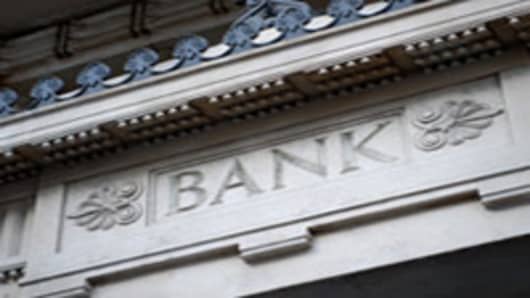The rate cuts from three major economies on Thursday may have dominated headlines, but it did little to inspire confidence in global stock markets, which fell as investors took the move to mean the world economy remains in trouble.
For many market watchers, it’s becoming apparent that there’s little global policymakers can do to arrest what some describe as a global “synchronized slowdown.”
The European Central Bankand the People’s Bank of China both slashed interest rates, the former to a record low, amid signs that economies in these regions are still weakening. The Bank of England, whose rates are already at an all-time low 0.5 percent, said it would buy 50 billion pounds ($78 billion) of assets with newly printed money to help the economy out of recession .
But such actions by central banks are becoming less effective, says one money manager, who suggests that policymakers should instead let the economic bust work itself through the system.
“There's virtually zero chance of that succeeding,” Bill Smead, CEO of Smead Capital Management, told CNBC Asia’s “Squawk Box” referring to pump-priming by the central banks. He cited the work of Michael Pettis, Finance Professor at Peking University, who said that when an economy that’s dependent on fixed-asset investment like China unwinds, there are only two options.
One is to have a “deep and long recession” lasting three or four years, and the other is to go through 10 years of zero growth, Smead said. But this will have huge impact on the prices of all assets across the board, he warned.
“We don’t think people have got it in their models, what all these mean to oil prices, what all this means to copper, steel and coal prices, you name it,” Smead added. “There is going to be a massive revamping of the secular global synchronized trade pricing mechanism and it’s started but we're probably in the second inning, we think.”
Jian Chang, China Economist of Barclays, agrees that that further moves by central banks around the world will not be effective in spurring growth.
“At this point, such central bank moves no long impress the market. Central banks rate cut may well be perceived as a sign of panic or desperation,” Chang said. “Markets remain cautious, given the weakening growth momentum seen across the board in major economies and they doubt the effectiveness of such monetary easing may have in lifting growth.”
Still, Reuters poll found that economists expect major central banks to do more to help their economies find a firmer footing. The ECB is expected to follow the rate cut on Thursday with more steps to spur growth, economists say.
The Bank of Japan (BOJ) meets next week and may keep monetary policy unchanged but BOJ Governor Masaaki Shirakawa warned on Thursday that Europe's debt crisisremained the biggest risk to Japan and signaled readiness to act if any market turmoil threatens its fragile economy. The BOJ has set aside about 40 trillion yen ($505 billion) for its asset-buying program, to keep interest rates low and weaken the yen but economists have argued that this is not sustainable.
U.S. Federal Reservewill hold its next meetings on July 31 and August 1, with bond firms polled by Reuters seeing a 50 percent chance that Chairman Ben Bernanke will announce another bond buying program. The Fed had held off on another round of asset purchasing in June, but Chairman Ben Bernanke said there was “considerable scope to do more”.
ECB Needs to Do More: Krugman
Bernanke’s comments echo that of Paul Krugman, Economics Professor at Princeton University, who said on his New York Times blog on Thursday that the European Central Bank needs to do a lot more to “keep the crisis from exploding”.
“We need enough movement from policy makers to give hope that a solution is coming, and reassure markets,” he wrote. “So what did the ECB do (on Thursday)? The minimal amount. Even in Frankfurt I guess they realized that not cutting rates at all would have meant full-blown crisis right away; but there was no effort to get ahead of the curve, no message about more to come.”
Charles Dallara, Managing Director of Institute of International Finance, told CNBC Asia's “Squawk Box” that the moves by central banks may be welcomed by markets but he remains bearish about growth prospects.
“The global environment is weakening and I am afraid we are getting negative synergies among the major economic zones of the world right now,” Dallara said. “What we are seeing on the central bank front is positive but it is just not enough to alter fundamentally weak bearish outlooks.”
The biggest risk to the global economy remains the sovereign debt crisis in Europe, and despite the rate cut on Thursday, key problems remain resolved. Among them are the overall size of the firewall to protect Europe from the problems in Italy, Spain and Greece; whether the funds that the ECB has put together can be used to directly inject liquidity into weak financial institutions and lastly, whether the European Union will make reforms to ease the credit squeeze in the troubled periphery nations, Dallara said.
- By CNBC's Jean Chua.


